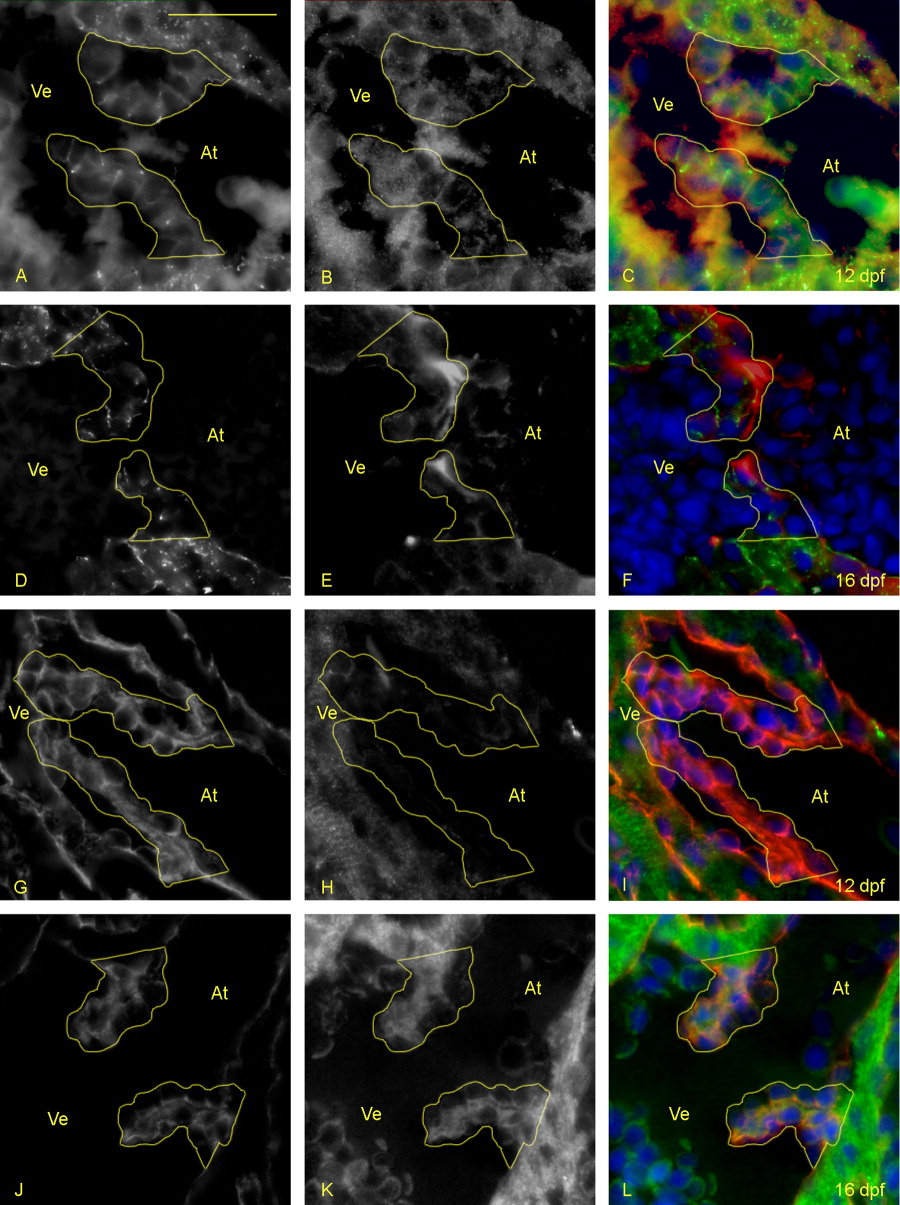Fig. 3 Valve leaflet cells become intermediate or mesenchymal between 12 and 16 days postfertilization (dpf). A-L: Five-micrometer paraffin sections of flk1::GFP (GFL, green fluorescent protein) transgene-carrying zebrafish embryos/larvae were immunostained to identify epithelial and mesenchymal cell phenotypes in the developing leaflets. Atria (At) and ventricles (Ve) are labeled (yellow letters), and yellow lines outline the extent of the atrioventricular (AV) valves. A-F: Staining identifies ZO-1 (A, D; green in C and F), focal adhesion kinase (B, E; red in C and F), and cell nuclei (DAPI: blue in C and F). The presence of ZO-1 reveals tight junctions that form to make cell to cell connections, which is indicative of an epithelial phenotype. FAK reveals whether there are transient (punctate) or long lived (large) cell:matrix adhesions occurring between these cells. A-C: At day 12, AV valve cells are organized, have ZO-1-containing tight junctions, and punctate FAK staining. D-F: By day 16, cells are less organized and some lack ZO-1-containing junctions. G-L: Staining identifies pancytokeratin (G, J; red in I and L), Vimentin (H, K; green in I and L), and cell nuclei (DAPI, 4′,6-diamidine-2-phenylidole-dihydrochloride; blue in I and L). G-I: At 12 dpf, the valves have a high level of pancytokeratin staining indicating that surrounding cells have a predominantly epithelial phenotype. J-L: By 16 dpf, a large increase in Vimentin is seen, indicating a shift toward mesenchymal cell phenotypes. Scale bar = 20 μm in A.
Image
Figure Caption
Acknowledgments
This image is the copyrighted work of the attributed author or publisher, and
ZFIN has permission only to display this image to its users.
Additional permissions should be obtained from the applicable author or publisher of the image.
Full text @ Dev. Dyn.

